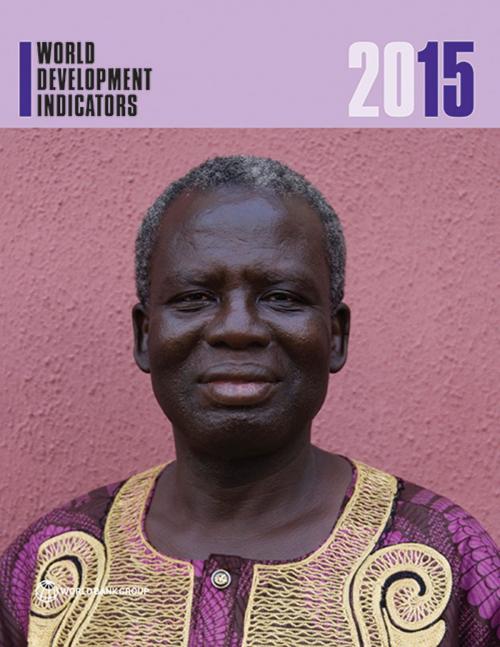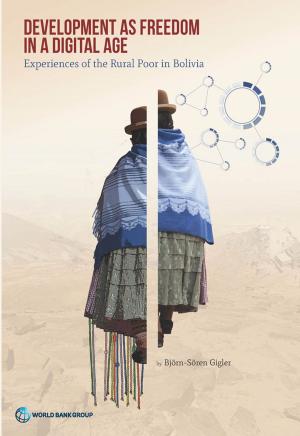World Development Indicators 2015
Nonfiction, Reference & Language, Reference, Almanacs & Trivia, Yearbooks & Annuals, Business & Finance, Economics, Economic Development, Business Reference| Author: | World Bank | ISBN: | 9781464804410 |
| Publisher: | World Bank Publications | Publication: | April 10, 2015 |
| Imprint: | World Bank Publications | Language: | English |
| Author: | World Bank |
| ISBN: | 9781464804410 |
| Publisher: | World Bank Publications |
| Publication: | April 10, 2015 |
| Imprint: | World Bank Publications |
| Language: | English |
World Development Indicators 2015 World Development Indicators 2015 provides a compilation of relevant, highquality, and internationally comparable statistics about global development and the fight against poverty. It is intended to help policymakers, students, analysts, professors, program managers, and citizens find and use data related to all aspects of development, including those that help monitor progress toward the World Bank Group’s two goals of ending poverty and promoting shared prosperity. Six themes are used to organize indicators—world view, people, environment, economy, states and markets, and global links. As in past editions, World Development Indicators reviews global progress toward the Millennium Development Goals (MDGs) and provides key indicators related to poverty. WDI 2015 includes: * A selection of the most popular indicators across 214 economies and 14 country groups organized into six WDI themes * Thematic and regional highlights, providing an overview of global development trends * An in-depth review of the progress made toward achieving the Millennium Development Goals * A user guide describing resources available online and on mobile apps A complementary online data analysis tool is available this year to allow readers to further investigate global, regional, and country progress on the MDGs: data.worldbank.org/mdgs. Each of the remaining sections includes an introduction; six stories highlighting specific global, regional or country trends; and a table of the most relevant and popular indicators for that theme, together with a discussion of indicator compilation methodology. WDI DataFinder Mobile App Download the WDI DataFinder Mobile App and other Data Apps at data.worldbank.org/apps. WDI DataFinder is a mobile app for browsing the current WDI database on smartphones and tablets, using iOS, Android, and Blackberry, available in four languages: English, French, Spanish, and Chinese. Use the app to: * browse data using the structure of the WDI * visually compare countries and indicators * create, edit, and save customized tables, charts, and maps * share what you create on Twitter, Facebook, and via email
World Development Indicators 2015 World Development Indicators 2015 provides a compilation of relevant, highquality, and internationally comparable statistics about global development and the fight against poverty. It is intended to help policymakers, students, analysts, professors, program managers, and citizens find and use data related to all aspects of development, including those that help monitor progress toward the World Bank Group’s two goals of ending poverty and promoting shared prosperity. Six themes are used to organize indicators—world view, people, environment, economy, states and markets, and global links. As in past editions, World Development Indicators reviews global progress toward the Millennium Development Goals (MDGs) and provides key indicators related to poverty. WDI 2015 includes: * A selection of the most popular indicators across 214 economies and 14 country groups organized into six WDI themes * Thematic and regional highlights, providing an overview of global development trends * An in-depth review of the progress made toward achieving the Millennium Development Goals * A user guide describing resources available online and on mobile apps A complementary online data analysis tool is available this year to allow readers to further investigate global, regional, and country progress on the MDGs: data.worldbank.org/mdgs. Each of the remaining sections includes an introduction; six stories highlighting specific global, regional or country trends; and a table of the most relevant and popular indicators for that theme, together with a discussion of indicator compilation methodology. WDI DataFinder Mobile App Download the WDI DataFinder Mobile App and other Data Apps at data.worldbank.org/apps. WDI DataFinder is a mobile app for browsing the current WDI database on smartphones and tablets, using iOS, Android, and Blackberry, available in four languages: English, French, Spanish, and Chinese. Use the app to: * browse data using the structure of the WDI * visually compare countries and indicators * create, edit, and save customized tables, charts, and maps * share what you create on Twitter, Facebook, and via email















